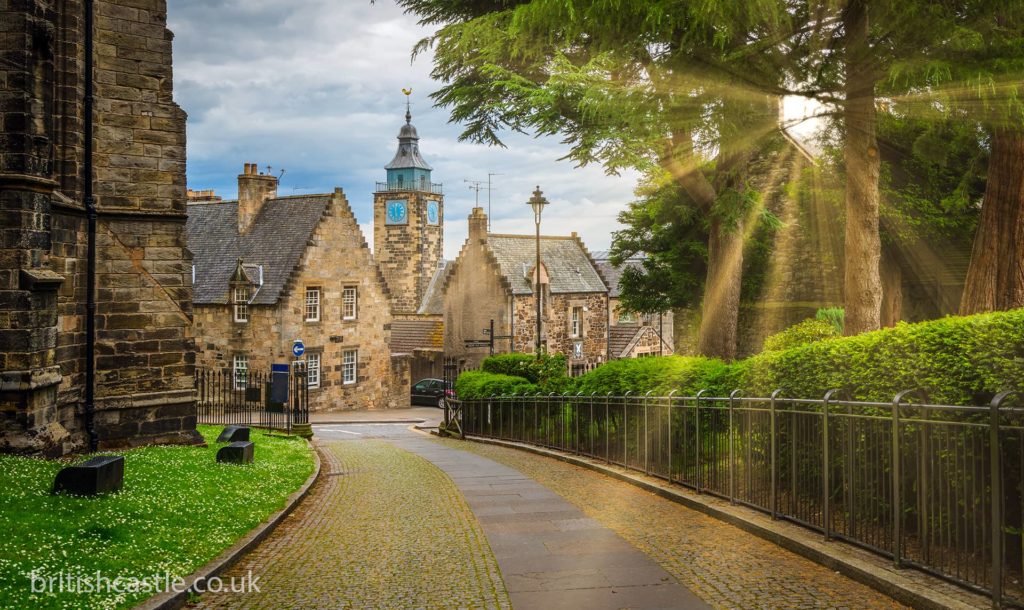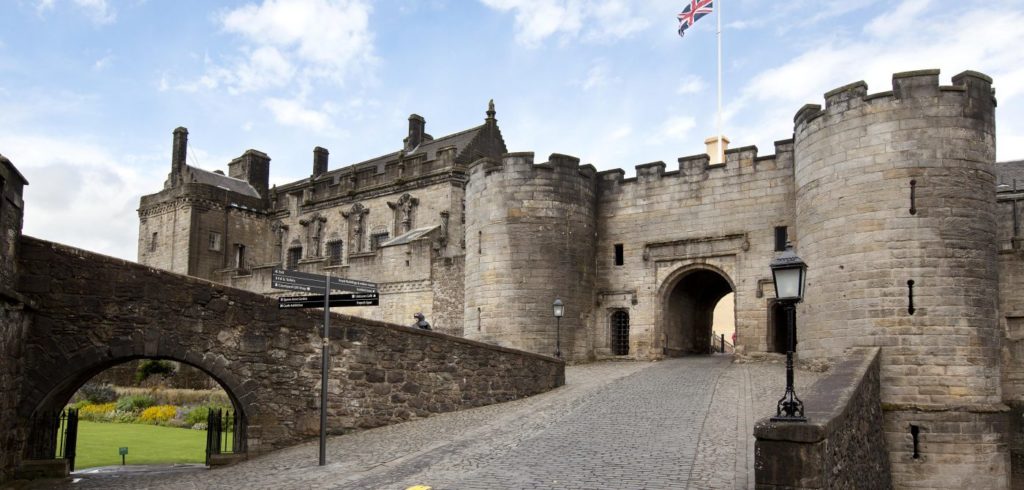Perched on top of a volcanic rock overlooking the River Forth, Stirling Castle is one of the most impressive castles in Scotland.
There is archaeological evidence that there was a settlement here as far back as the 7th century and it is thought that the Romans may also have recognised the importance of the site and had a fortress here.

Probably best known for its place in the Braveheart story, the castle has a rich history having been attacked on several occasions. It has also seen the baptisms and coronations of a number of Scottish Monarchs including Mary, Queen of Scots.

Most of the buildings that remain today were constructed between the 16th and early 18th centuries.
King James IV built the gatehouse that leads from the outer bailey to the castle. The gateway was flanked by four circular towers. Today only the southern Prince’s Tower, the gateway and part of the curtain wall remain.
To the east of the gatehouse, is the 125 feet long, 36 feet wide, great hall, the largest medieval banqueting hall in Scotland. The impressive Palace block, built by James V, is to the left of the gatehouse and combined renaissance and Gothic detail.
The regimental museum of the Argyll and Sutherland Highlanders is located within the castle.
There is a project under way at present to recreate the furnishings of the castle in 16th century style.
Today, the castle is under the care of Historic Scotland and is open to the public daily throughout the year. For opening times, admission fees and other information please visit their Stirling Castle pages.
Stirling Castle History
King Alexander I of Scotland built the first fortress at Stirling in the 11th century and it has been enlarged and undergone restoration work on several occasions over the centuries. The castle has a rich history having undergone several successful sieges.
Stirling Castle was occupied by English soldiers between 1174 and 1189 under the terms of the Treaty of Falaise between King Henry II and William the Lion of Scotland.
During the Scottish Wars of Independence, ownership of the castle swung back and forth between the Scots and the English. Edward I of England captured Stirling Castle in 1296 but within a year William Wallace had defeated the English army and retaken the castle. The following year it was back in the hands of the English but only for a short time.
Probably the most notable siege was in 1304 when Stirling was the last stronghold of resistance to Edward I. It took 4 months for his army to capture the castle and take control of Scotland. Stirling Castle was in English hands until 1313 until Robert the Bruce defeated the English army at Bannockburn. The castle then remained in Scottish hands for 20 years until the English victory at Halidon Hill saw them retake Stirling which they held until 1342.
Mary, Queen of Scots, spent much of her childhood at Stirling and celebrated her coronation in the Chapel Royal in 1543.
During the reign of King James VI, the castle suffered attack on three occasions between 1571 and 1585 from Scots factions. In 1594, King James ordered the construction of a new Chapel Royal to celebrate the christening of his son Prince Henry. This replaced the medieval chapel to the north of the inner bailey.
Stirling was successfully besieged by Oliver Cromwell’s parliamentarian forces in 1651. The last siege at the castle was in 1746 when Bonnie Prince Charlie and the Jacobites were unsuccessful in their attempt to take control of the castle.
Between 1800 and 1964 the castle was an army barracks owned by the British army. During this time the castle saw many alterations; the great hall was turned into an accommodation block, the Royal Palace into the officer’s mess and the Kings old building was transformed into an infirmary. Currently work is ongoing to restore these buildings back to their original state.
Read about other Scottish Castles here.